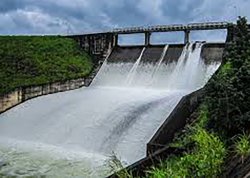Hydropower relies on the use of waves, streams, and other moving sources of water to produce electricity. Since this technology relies on the strength of water alone, it is a renewable resource, and it produces no carbon emissions to be a clean energy source. While large dams such as the Hoover Dam in the western United States come to mind when thinking of hydropower, the reality is that generators both small and large exist across the country, and the technology sees wide use.
How it Works
Hydropower can work wherever there is sufficient water and a strong enough flow. The kinetic force of the water moves a turbine, which in turn produces electricity. The strength of the water’s flow may not simply be the result of the strength of its flow, but may also be a result of elevation or other factors.
Hydropower in New Jersey
There are prospects of hydropower on a smaller scale in New Jersey using existing dams. The two existing power stations in New Jersey are located along the Great Falls on the Passaic River and Yards Creek Generating Station in Warren County. There are also current projects at the Hunterdon reservoirs that generate small amounts of electricity that is mainly used for pumping and filtering water. However, these plants currently provide a very small amount of net energy generation. Due to New Jersey’s rivers and its long coastline, the state holds considerable potential for further hydroelectric projects, though its final role in the Energy Master Plan remains to be seen.
Learn More
